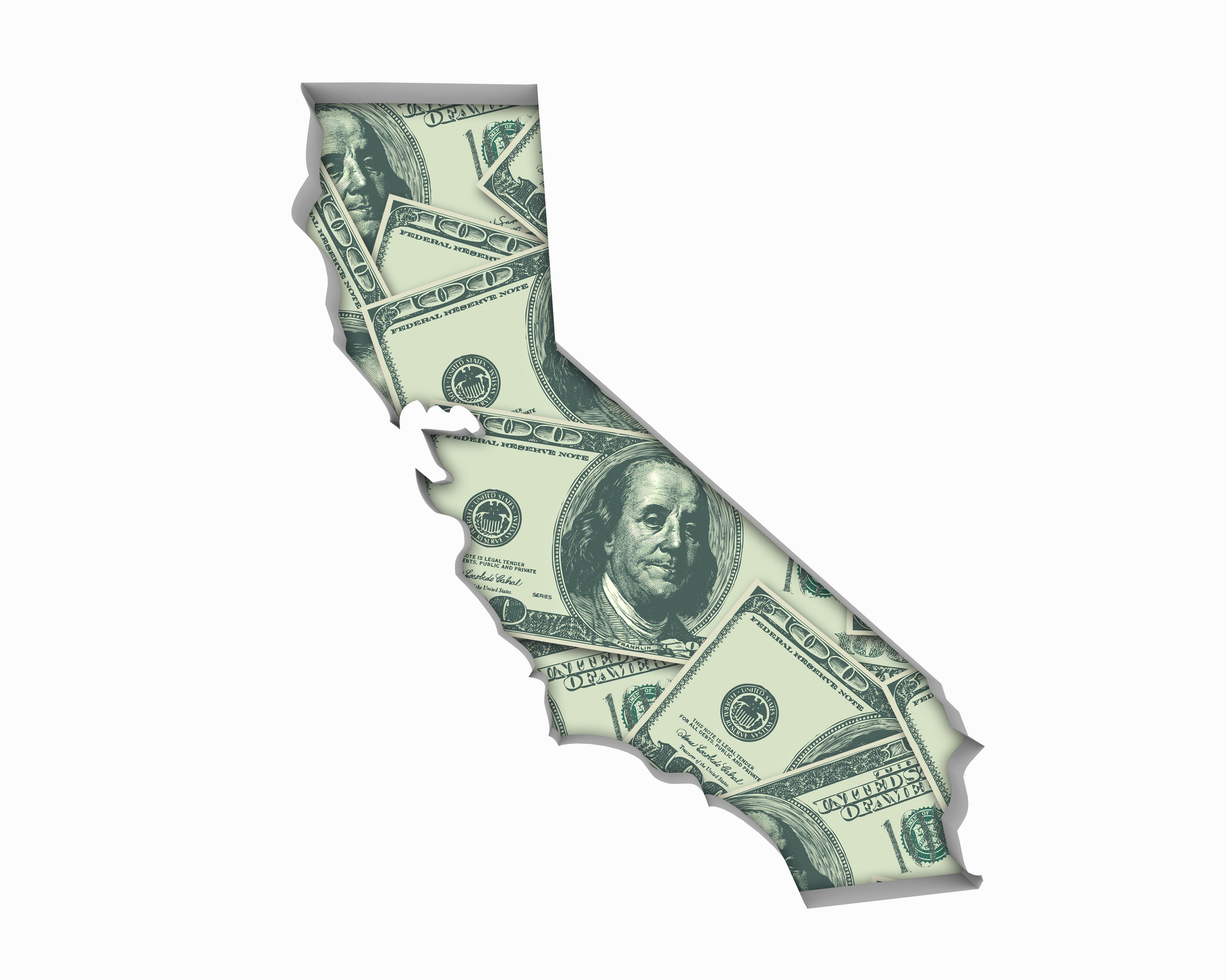The 10 Places Where Social Security Covers the Most (and Least) Of Your Expenses
On average, Social Security covers 30.11% of retirees’ spending. Find out where Social Security benefits will cover the highest and lowest percentage of your spending in retirement.


Most of us saving for retirement are counting on our Social Security benefits to cover part of our spending in retirement. After all, Social Security benefits are meant to replace 40% of your current income. In reality, Social Security only covers, on average, 30.11% of retirees’ spending, according to LendingTree.
Being able to keep pace with the cost of living is the reason many people move when they retire. That's also why people often look for homes in states where Social Security benefits and retirement income aren't taxed heavily or at all. They also look for homes in states that don't have estate or inheritance taxes; while it's one thing to feel taxed to death, it's worse to have your actual death taxed.
Places where your Social Security benefits cover more than 30% of your retirement spending

Almost every region in the county is represented among the top 10 metro areas where your Social Security will cover more of your spending.
From just $107.88 $24.99 for Kiplinger Personal Finance
Become a smarter, better informed investor. Subscribe from just $107.88 $24.99, plus get up to 4 Special Issues

Sign up for Kiplinger’s Free Newsletters
Profit and prosper with the best of expert advice on investing, taxes, retirement, personal finance and more - straight to your e-mail.
Profit and prosper with the best of expert advice - straight to your e-mail.
McAllen, Texas, is the only metro area on the list where Social Security benefits will cover more than a third of retirement spending. This is no surprise to Kiplinger readers. McAllen has often made our list of cheapest cities in the U.S. and currently ranks fifth with a cost of living 17.6% below the national average.
“There’s something to be said for living in a low-cost-of-living location, and McAllen fits that bill,” says Matt Schulz, LendingTree chief consumer finance analyst. “Controlling your spending is a crucial step toward having a comfortable retirement, and that can be far easier in a place with cheaper housing and a lower cost of living.”
Tulsa is another city that made our list of the cheapest cities. It is seventh on our list of cheapest cities and has a cost of living that is 16.4% below the national average. That might be why Social Security benefits cover a bit over 32% of retirees' spending. The city also has a low unemployment rate of 2.9%. If you want to unretire at some point, you have a good chance of finding a job.
Rank/Metro Area | Average spending | Implied pre-tax need | Average Social Security income | % spending covered by Social Security |
|---|---|---|---|---|
1. McAllen, Texas | $50,673 | $61,821 | $21,398 | 34.61% |
2. Buffalo, New York | $55,882 | $68,176 | $22,581 | 33.12% |
3. El Paso, Texas | $53,396 | $65,143 | $21,398 | 32.85% |
4. Syracuse, New York | $56,355 | $68,754 | $22,581 | 32.84% |
5. Scranton, Pennsylvania | $55,053 | $67,165 | $21,978 | 32.72% |
6. Wichita, Kansas | $52,981 | $64,637 | $21,096 | 32.64% |
7. Augusta, Georgia | $53,869 | $65,720 | $21,317 | 32.44% |
8. Tucson, Arizona | $55,823 | $68,104 | $21,989 | 32.29% |
9. Little Rock, Arkansas | $52,744 | $64,348 | $20,772 | 32.28% |
10. Tulsa, Oklahoma | $52,981 | $64,637 | $20,860 | 32.27% |
Places where your Social Security benefits cover less than 30% of retirees' spending

One look at the table below, and you can see that retiring in California is an expensive proposition. Out of the 100 metro areas in the survey, eight of the ten places where Social Security covers the lowest percentage of retirees' spending are in the Golden State. It's no coincidence that cities in California hold five of the ten spots on our list of the 10 Most Expensive Cities to Live in the US.
Also notable is that the top two cities on our list of most expensive cities to live in don't make this list; your Social Security payments will cover more of your spending in Manhattan, New York, and Honolulu, Hawaii, than in Oxnard or Stockton, California. Why quibble when all three of these states, including Alaska and Washington, D.C., are the five most expensive states for retirees?
Rank/Metro Area | Average spending | Implied pre-tax need | Average Social Security income | % spending covered by Social Security |
|---|---|---|---|---|
1. San Francisco, California | $69,971 | $85,364 | $20,726 | 24.28% |
2. Los Angeles, California | $68,372 | $83,414 | $20,726 | 24.85% |
3. Washington, D.C. | $64,288 | $78,431 | $19,540 | 24.91% |
4. Oxnard, California | $67,189 | $81,970 | $20,726 | 25.28% |
5. San Jose, California | $66,833 | $81,537 | $20,726 | 25.42% |
6. San Diego, California | $66,005 | $80,526 | $20,726 | 25.74% |
7. Sacramento, California | $64,465 | $78,648 | $20,726 | 26.35% |
8. Riverside, California | $63,873 | $77,926 | $20,726 | 26.60% |
9. Stockton, California | $63,577 | $77,565 | $20,726 | 26.72% |
10. Miami, Florida | $66,182 | $80,742 | $21,740 | 26.93% |
How much do you need to retire?
The "magic number" of what you need to retire is partly determined by the lifestyle you want after you stop working full-time. You can retire happily with $33,000 in a 401(k) if you have more modest needs. If you have more expensive tastes, with disciplined and consistent savings, you can try to become a 401(k) millionaire.
Not sure what your magic number is supposed to be? Kiplinger's "Retirement Savings on Track? series can show you how much you should have saved based on age and income for those aged 50-55, 55-60, and 60-65.
If you need some guidance about how much to save, knowing the minimum savings you'll need to retire in all 50 states is half the battle. Next, you need a plan to get there.
Methodology To determine where Social Security stretches the furthest, LendingTree analysts conducted two calculations: Estimating annual retiree spending: Researchers estimated average annual retiree expenditures by multiplying the average annual expenditures of retired workers (using U.S. Bureau of Labor Statistics — BLS — 2023 Consumer Expenditure Survey data) with the cost of living (using U.S. Bureau of Economic Analysis — BEA — 2023 regional price parity data) in each metro. We adjusted for inflation using the year-over-year change in the BLS Consumer Price Index from April 2024 to April 2025. To account for taxes, these expenditures were then converted to pretax income levels, assuming a flat 22% federal tax rate (via the Tax Foundation). Calculating coverage by Social Security: Researchers divided the average annualized Social Security retirement benefit (based on 2024 Social Security Administration — SSA — averages plus 2025 cost-of-living adjustments) by the implied pretax income required. Researchers also applied the “4% rule” to determine necessary retirement assets, dividing the gap between implied needs and Social Security benefits by 4% to estimate required savings. Researchers used the U.S. Census Bureau 2023 American Community Survey with five-year estimates to identify the 100 largest metros.
Related Content
Profit and prosper with the best of Kiplinger's advice on investing, taxes, retirement, personal finance and much more. Delivered daily. Enter your email in the box and click Sign Me Up.

Donna joined Kiplinger as a personal finance writer in 2023. She spent more than a decade as the contributing editor of J.K.Lasser's Your Income Tax Guide and edited state specific legal treatises at ALM Media. She has shared her expertise as a guest on Bloomberg, CNN, Fox, NPR, CNBC and many other media outlets around the nation. She is a graduate of Brooklyn Law School and the University at Buffalo.
-
 How to Protect Yourself and Others From a Troubled Adult Child
How to Protect Yourself and Others From a Troubled Adult ChildThis case of a violent adult son whose parents are in denial is an example of the extreme risks some parents face if they neglect essential safety precautions.
-
 To Build Client Relationships That Last, Embrace Simplicity
To Build Client Relationships That Last, Embrace SimplicityAs more automation becomes the norm, you can distinguish yourself as a financial professional by using technology wisely and prioritizing personal touches.
-
 Client Demand Is Forcing Advisers to Specialize: How to Deliver
Client Demand Is Forcing Advisers to Specialize: How to DeliverThe complexity of wealthy clients' needs — combined with AI and consumer demand — suggests the future of financial planning belongs to specialized experts.
-
 The 2026 Retirement Catch-Up Curveball: What High Earners Over 50 Need to Know Now
The 2026 Retirement Catch-Up Curveball: What High Earners Over 50 Need to Know NowUnlock the secrets of the 2026 retirement catch-up provisions: A must-read for high earners aged 50 and above.
-
 A 5-Step Plan for Parents of Children With Special Needs, From a Financial Planner
A 5-Step Plan for Parents of Children With Special Needs, From a Financial PlannerGuidance to help ensure your child's needs are supported now and in the future – while protecting your own financial well-being.
-
 I'm 59 With $1.7 Million Saved and Just Lost My Job. Should I Retire at 59½, or Find New Work?
I'm 59 With $1.7 Million Saved and Just Lost My Job. Should I Retire at 59½, or Find New Work?We asked professional wealth planners for advice.
-
 A Wealth Adviser Explains: 4 Times I'd Give the Green Light for a Roth Conversion (and 4 Times I'd Say It's a No-Go)
A Wealth Adviser Explains: 4 Times I'd Give the Green Light for a Roth Conversion (and 4 Times I'd Say It's a No-Go)Roth conversions should never be done on a whim — they're a product of careful timing and long-term tax considerations. So how can you tell whether to go ahead?
-
 A 4-Step Anxiety-Reducing Retirement Road Map, From a Financial Adviser
A 4-Step Anxiety-Reducing Retirement Road Map, From a Financial AdviserThis helpful process covers everything from assessing your current finances and risks to implementing and managing your personalized retirement income plan.
-
 I Drive and Collect Classic Cars: Here’s How I Got in the Game Without Spending a Fortune
I Drive and Collect Classic Cars: Here’s How I Got in the Game Without Spending a FortuneAre classic cars a hobby or an investment strategy — or both? Either way, the vintage car scene is much cooler and more affordable than you think.
-
 The $183,000 RMD Shock: Why Roth Conversions in Your 70s Can Be Risky
The $183,000 RMD Shock: Why Roth Conversions in Your 70s Can Be RiskyConverting retirement funds to a Roth is a smart strategy for many, but the older you are, the less time you have to recover the tax bite from the conversion.
-
 A Financial Pro Breaks Retirement Planning Into 5 Manageable Pieces
A Financial Pro Breaks Retirement Planning Into 5 Manageable PiecesThis retirement plan focuses on five key areas — income generation, tax management, asset withdrawals, planning for big expenses and health care, and legacy.